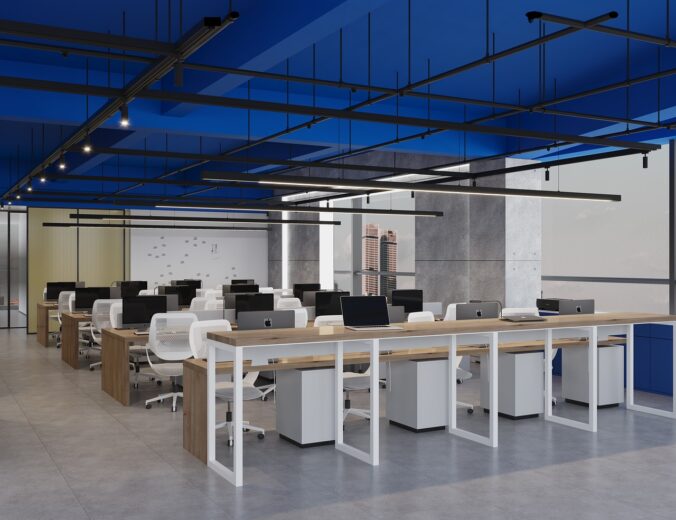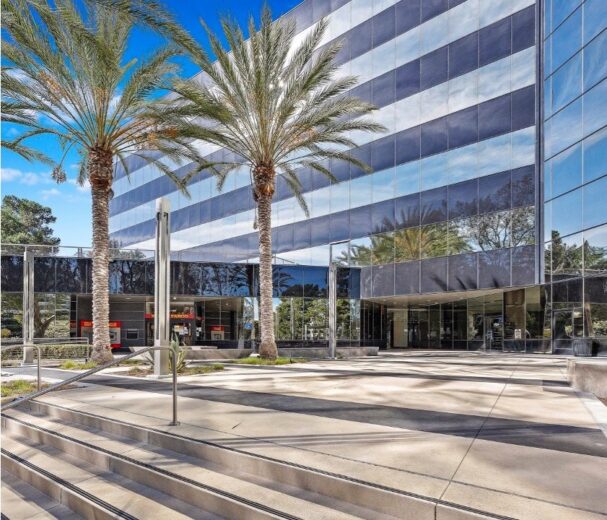Tenant Improvements 101
October 23, 2024

Tenant improvements (TI) are the unsung heroes of commercial real estate transactions. They can transform an outdated, badly designed space into a sleek, collaborative environment befitting the leaders of any industry.
So what are TI and how do they work? This article will provide a foundation for understanding what TI are, why they are important, and how they are financed.
Definition
Tenant improvements, often referred to as TI, are alterations, repairs, or renovations made to a commercial property to suit the needs of the tenant. These improvements can be commissioned by either the landlord or the tenant, though the ultimate goal is the same — to create a space where the tenant and their business can thrive.
Tenant improvements are important to both tenants and landlords because they enhance the value and functionality of commercial properties. For tenants, these improvements can help create a customized environment that can increase efficiency, employee satisfaction, and brand awareness. For landlords, offering these improvements increases the property’s appeal to tenants, often leading to longer lease commitments and reduced vacancy rates. By investing in TIs, tenants receive a space that supports their business growth, while landlords enjoy a more marketable property with potentially higher rental returns.
What Qualifies as TI?
To qualify as a tenant improvement, changes must be permanent or semi-permanent and designed to add long-term value to the property. These improvements should also suit the specific needs of an individual tenant. Commonly, tenant improvements are made in the form of a build-out when a tenant moves into a new space, and include interior construction to change the floorplan or upgrade the facilities, lighting and acoustic enhancements, flooring or carpeting changes, or HVAC upgrades.
What Does Not Qualify as TI?
Temporary or other non-permanent upgrades, such as furniture, décor, or electronics, do not qualify as TI because they can be easily removed from a space and do not add long-term value to the property.
How Are TI Financed?
Tenant Improvements can be financed through several different methods, but one of the most common is landlord allowances, also known as tenant improvement allowances (TIAs). These are funds provided by landlords to tenants to cover improvement costs and are typically bundled together with the tenant’s rent payment, obscuring the true cost of the rent. Tenants do have other options available to them, including various loans and other financing arrangements:
- SBA Loans: Small businesses can apply for loans backed by the Small Business Administration (SBA) to cover tenant improvements. These loans are accessible but can take time to process due to extensive documentation requirements.
- Equipment Financing: Tenants can get loans or leases specifically for purchasing or leasing equipment needed for their business, such as kitchen or bar equipment. This option helps businesses lower their upfront costs and spread payments over time.
- Construction Loans: For significant renovations, tenants can apply for construction loans. These short-term loans (often 12-24 months) are designed to fund large-scale projects (such as plumbing) and are paid back once the improvements help generate revenue.
- Business Financing: If the other options aren’t suitable, tenants can explore traditional business financing options like lines of credit or term loans. These loans can be used not only for tenant improvements, but also for other business needs.
Pros and Cons of Traditional TI Financing
Traditional financing methods for TI offer benefits and drawbacks, which tenants must consider to determine how best to create the workspace their company needs to grow their business.
- Pros:
- Access to Money: Provides necessary funding to make important improvements to the rented space.
- Customizing the Space: Allows tenants to adjust the space to fit their specific needs.
- Possible Tax Benefits: Some costs related to the financing may be tax-deductible, saving the business money.
- Cons:
- Collateral Needed: Traditional loans usually require collateral to secure them, putting tenant assets at risk if they default on their loan.
- Slow Approval Process: Obtaining a loan is often a laborious process, requiring a lot of paperwork and several months to receive the loan.
- Higher Interest Rates: Traditional loans can come with higher interest rates compared to other funding options.
- Limits on Future Loans: Some loans can count against the tenant’s total debt, making it harder to get additional loans in the future.
- Cash Restraints: TI is typically paid for out-of-pocket or through costly short-term loans, which tie up cash reserves and limit the ability to invest in higher value opportunities.
A Better Way to Finance TI
At Dolfin, we are pioneering a new way to finance TI – we completely reimagined the financing structure to simplify the process, eliminate excess paperwork, and allow you to redirect your capital investment for higher value, better uses. We work directly with tenants and landlords to finance improvements based solely on the tenant’s credit rating. We offer unsecured, fully amortizing TI leases and can offer indicative pricing within 48 hours.
Drawing on more than 50 years of combined commercial real estate experience and originating nearly $700M in credit-tenant loans, we developed the first standardized TI Lease to provide our clients with a cost-efficient alternative to funding tenant improvements in both leased and owned properties.
Benefits of Dolfin’s TI Lease
Our TI Lease helps overcome the challenges of traditional tenant improvement financing in the following ways:
- No Collateral Required: Unlike traditional financing, Dolfin’s TI Lease is unsecured.
- Long-Term, Fixed Financing: The financing terms match the length of the lease, which provides stability for tenants without the worry of refinancing or rising rates.
- Transparency: We work directly with our clients to finance improvement projects based on the tenant’s credit rating and space lease, giving the client full visibility of the process.
- Leverages Tenant Credit: The Dolfin TI Lease terms are based on the tenant’s credit rating, which offers better financing terms and reduces the overall cost of borrowing.
- Faster, Easier Access: Our shorter, standardized Dolfin TI Lease, backed by our proprietary TI financing platform, simplifies the entire process and grants access to funds faster and without the red tape of traditional TI structures.
- Covers In-Place TI: The Dolfin TI Lease is applicable to improvements that have already occurred, allowing tenants or landlords to take these projects off the balance sheet to invest in driving their businesses forward.
Understanding tenant improvements and the available financing options is crucial for businesses looking to customize their commercial spaces. When you work with Dolfin, you can navigate these challenges more effectively and focus on growing your business.




